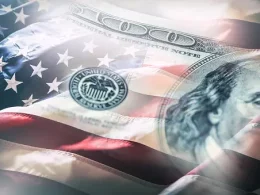As the global economy continues to recover from the effects of the pandemic, inflation has become a hot topic in economic circles. The Federal Reserve, responsible for managing monetary policy in the United States, plays a crucial role in balancing inflation and maintaining stability in financial markets. However, recent fissures within the organization have raised concerns about its ability to navigate these high stakes. In this blog post, we will explore how inflation impacts the economy and delve into the challenges facing The Federal Reserve as it seeks to balance competing interests. Let’s dive into this fascinating and complex world of economics!
Inflation
Inflation is a term used to describe the general increase in prices of goods and services over time. It affects every aspect of our lives, from the cost of groceries to the price we pay for housing. While some inflation can be healthy for an economy, too much can cause major problems.
One consequence of high inflation is that it reduces the purchasing power of people’s money. This means that even if you have saved up a significant amount, its value may decrease as prices rise faster than your savings.
Another negative impact is on fixed-income earners who depend on their salaries or pensions. If inflation increases at a faster rate than their income, they will experience a decrease in their standard of living as they struggle to afford basic necessities.
Additionally, high inflation creates uncertainty and instability in financial markets. Investors become hesitant to invest capital because they fear losing money due to unpredictable market conditions.
Therefore, finding ways to balance inflation rates becomes crucial for maintaining economic stability and preventing crises such as hyperinflation which can have devastating consequences for entire countries.
The Federal Reserve
The Federal Reserve is often referred to as the “central bank” of the United States. It was created in 1913 with the purpose of stabilizing and regulating the country’s financial system. The Fed is independent from political influence, which allows it to make decisions based on economic data rather than political pressure.
One of the key responsibilities of the Federal Reserve is to manage monetary policy. This involves adjusting interest rates and controlling money supply in order to achieve certain economic goals, such as maintaining price stability and promoting employment.
The Fed also plays a crucial role in supervising banks and other financial institutions to ensure they are operating safely and soundly. In addition, it serves as a lender of last resort for banks that may be experiencing liquidity problems.
The Federal Reserve plays a vital role in maintaining a stable and healthy economy for all Americans. Its actions have far-reaching impacts on everything from inflation rates to job growth, making it an important institution both domestically and internationally.
Balance
Achieving balance is an essential aspect of life, regardless of the context. In finance, balance refers to creating a stable and sustainable economy that can withstand various challenges like inflation and recession. The Federal Reserve plays a vital role in balancing the US economy by regulating interest rates.
However, maintaining this balance can be challenging due to fissures within the organization concerning monetary policy. These divergences between members’ opinions regarding appropriate policies can result in conflicting economic decisions if left unaddressed.
To achieve equilibrium amidst these fissures, it’s crucial for policymakers to communicate effectively and consider all perspectives when making critical decisions affecting monetary policies. Doing so will help maintain stability while ensuring that everyone benefits from a healthy economy.
Balance is not just about finding harmony but also understanding how each element interacts with one another. It’s only by keeping things in check that we create long-lasting results that benefit everyone involved – both present and future generations alike!
Fissures
The Federal Reserve has always been an institution that thrives on balance. But in recent years, there have been growing concerns over the fissures within the organization. Dissent among members of the Fed is nothing new, but it has become increasingly apparent in recent years as inflation rates and economic policies come into question.
One of the most significant rifts within the Fed is between those who prioritize fighting inflation and those who focus more on promoting growth. The former group tends to emphasize keeping interest rates high to prevent rising prices while others believe that lower interest rates are a better way to stimulate economic growth.
Another area where fissures have appeared is around how much autonomy regional banks should have versus centralized control from Washington D.
C. There are also debates about whether policymakers should be more transparent with their decision-making processes or keep things behind closed doors.
Ultimately, these internal divisions can make it difficult for The Federal Reserve to achieve its goals effectively. It remains essential for members of this organization to continue working towards finding common ground and striking a delicate balance that benefits both individual citizens and the broader economy as a whole.
Conclusion
As the Federal Reserve continues to navigate the high stakes game of balancing inflation and fissures among its members, it is clear that there are no easy solutions. The Fed must take into consideration a range of factors, including economic indicators, political pressures and internal disagreements.
The decisions made by the Fed have far-reaching consequences for both domestic and global economies, making it imperative that they proceed with caution. While there may be disagreements among policymakers on how best to move forward, one thing is certain: the need for transparency and open communication within the Fed has never been greater.
As we move forward into an uncertain future, it will be interesting to see how the Federal Reserve chooses to address these challenges. Will they continue along their current path or make bold new moves in an effort to stabilize markets? Only time will tell. But one thing is certain – whether you’re an investor or simply someone who cares about our economy – what happens at the Fed matters more than ever before.












